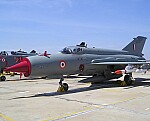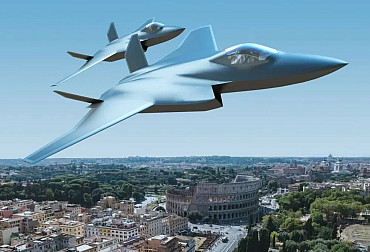A European problem called SEAD?
The conduct of air domain warfare in Ukraine demonstrates the importance of countering adversary air defenses. To date, neither side has been able to establish superiority on the Ukrainian battlefield due to its inability to operate effectively in this domain. The question is how European states are doing in this important, if not crucial, discipline.
The war in Ukraine has shown, and continues to show, that in today's high-intensity conventional warfare, the suppression or destruction of an adversary's air defense (AD) is a very important, if not the key component. From the beginning of the war in February 2022, Russian forces have failed to suppress and destroy Ukrainian air defenses, resulting in, among other things, the inability to achieve air superiority over all of Ukraine. By early April 2022, Russian forces had only managed to destroy 17 Ukrainian air defence assets, but it cannot be said unequivocally that all of them were destroyed by the Russian air force. Rather, it is the intervention of ground forces. Although the situation where the Russian Air Force is apparently unable to launch a massive SEAD (Suppression of Enemy Air Defense) campaign against Ukrainian air defense forces persists, Russian forces are increasingly succeeding in finding gaps in Ukrainian air defense and operating in those gaps with their frontline air force. It can also be said that the Russian forces are carrying out suppression and destruction, or employment of Ukrainian air defence forces by means of missile strikes against major cities and strategic objects so that Ukrainian air defence assets are not deployed closer to the front line, leaving the Russian air force free to operate. The situation is similar on the Ukrainian side, which, while experiencing occasional successes, is unable to conduct a coherent SEAD campaign against Russian air defense forces, even when using, for example, U.S. high-speed anti-source electromagnetic radiation (HARM) missiles.

In the context of the importance of countering an adversary's air defence in a conventional conflict, this raises the question of Europe's existing capabilities, or whether European states are capable of potentially operating independently against Russian air defence assets. A 2020 study by the International Institute for Strategic Studies states that of the approximately 1,600 aircraft, only the lower tens are designed for SEAD missions, if one does not count US capabilities. The Center for Strategic and International Studies then concludes, without providing specific numbers in its 2023 study, that the capabilities of European states to conduct counter-PCW operations are very limited, and that the 2011 situation, when European states' dependence on U.S. capabilities became fully apparent during Operations Odyssey Dawn and Unified Protector, is virtually permanent. During these operations, virtually all SEAD operations were conducted by the US Air Force. However, contrary to popular opinion, the US Air Force has only very limited SEAD capabilities in Europe - specifically the 480th Fighter Squadron based at Spangdahlem in Germany, armed with F-16s specialised in SEAD.
The question is, what happens if the US has to redeploy a significant part, if not all, of its available assets to the Western Pacific due to the changing security situation in the context of China's continued rise to power? It is very likely that, given the Chinese People's Liberation Army's capabilities and capabilities in the area of air defense, the U.S. Air Force and Navy will need all available capabilities, as, for example, a 2017 RAND Corporation study shows that 4th generation aircraft armed with HARM missiles may no longer be sufficient against advanced Chinese air defense. At this point, it can be argued that if the 4th generation aircraft (F-16s) are not sufficient, concerns about moving them out of Europe are misplaced. One can partially agree with this argument, but one cannot rule out the fact that the aforementioned US squadron stationed in Germany may be rearmed with, for example, F-35s, which may naturally have a better chance of success against advanced air defence.
It is the fact that the F-35 aircraft will be armed with HARM missiles in the future, according to the manufacturer, that may be a notional balance in a future potential conflict with Russia. The F-35 will form the backbone of the European air force around 2030, so it would not be out of place to look for a solution in the F-35 and greater European involvement in alliance SEAD operations. The future availability of HARM missiles may be an issue, as these are US-made missiles. Therefore, the question arises as to whether to look for a European solution in this category as well, which would be sustainable in the long term, even in the aforementioned context of a possible transfer of US capabilities to the Western Pacific, and would also support the European defence industry.







